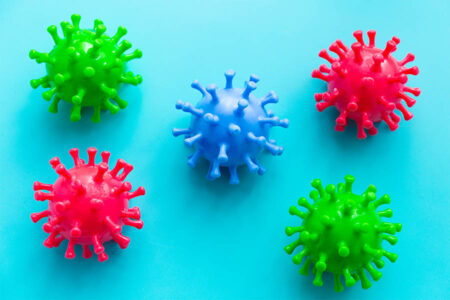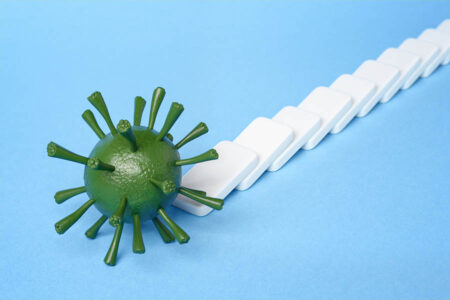Human Metapneumovirus (HMPV): Common Symptoms, Causes, and How It Spreads
January 2025 | Reading time: 5 minutes
Table of Contents
Especially in the winter months, the Human Metapneumovirus (HMPV) has been a cause of increasing concern all throughout the United Kingdom. Though less well-known than the flu or COVID-19, HMPV is a major cause of respiratory problems. From minor symptoms to major problems, knowing about HMPV is crucial for protecting your family and yourself. We cover in this post what HMPV is, its common symptoms, causes, modes of transmission, and sensible preventative measures.
What Is Human Metapneumovirus (HMPV)?
Mostly affecting the upper and lower respiratory tracts, the respiratory virus Human Metapneumovirus (HMPV) is Found first in 2001, it has numerous traits and is intimately linked to the respiratory syncytial virus (RSV). Most active in late winter and early spring, HMPV causes seasonal fluctuations in respiratory diseases.
The NHS claims that among the main causes of respiratory infections in children, the elderly, and immunocompromised people (NHS, 2025), HMPV is Though it is usually minor, in susceptible groups it can develop to severe illnesses including bronchiolitis or pneumonia.

Symptoms of HMPV
Common Symptoms
Most HMPV sufferers have symptoms resembling those of a normal cold, comprising:
- Nasal run-through
- Cough
- Fever
- Congestion in the nose
- Fatigue
Severe Symptoms
HMPV can occasionally, particularly in high-risk individuals, produce more serious respiratory problems including:
- Inability to breathe
- Wheezing
- Ongoing high fever
- cyanosis, or bluesish skin brought on by oxygen deprivation
The age and health status of the patient usually determines the degree of symptoms. Young children under five and adults over 65, for example, are more prone to have issues (Public Health England, 2025).
Causes of HMPV
HMPV is a member of the Pneumoviridae family of viruses. It spreads via respiratory droplets expelled during coughing or sneezing an infected individual does. Several elements help HMPV to spread:
- close proximity to sick people.
- Touching infected objects then your face.
- Bad interior ventilation, particularly in winter months when individuals spend more time indoors.
With infections peaked in winter and early spring, environmental elements including seasonal weather significantly affect the activity of the virus.
How HMPV Spreads?
Highly contagious, HMPV travels through:
Respiratory Droplets: When an infected person coughs, sneezes, or even speaks, they discharge microscopic droplets carrying the virus.
Surface Contact: The virus can live on surfaces for hours. Touching contaminated items like handrails or doorknobs helps spread the germs.
Close Contact: Spending time in crowded areas especially during peak seasons increases the risk of infection.
The World Health Organisation advice keeping good cleanliness and avoiding crowded areas during epidemics to lower the risk of transmission (WHO, 2025).
Prevention of HMPV
Although there isn’t a particular vaccination for HMPV, various preventative steps can lower your chance of infection:
Hygiene Practices
- Spend at least twenty seconds washing your hands with soap and water.
- When soap is not handy, use hand sanitizers based on alcohol.
- Try not to touch your face, especially your mouth, nose, and eyes.
Protective Measures
- Don masks in poorly ventilated or congested spaces.
- Particularly in common areas, regularly clean often touched surfaces.
- During the seasons of highest HMPV, practice social distance.
Strengthen Your Immune System
- Eat a balanced diet heavy in whole grains, fruits, and vegetables.
- Get consistent exercise to raise your general fitness level.
- Keep current with immunizations for other respiratory diseases, including the flu and COVID-19, which can help to lower complications should one be infected with HMPV.
Diagnosis and Treatment
How HMPV Is Diagnosed?
Usually, doctors diagnose HMPV using:
Symptoms:Seeing respiratory problems include coughing, congestion, and dyspnea makes one aware.
PCR Testing:A lab technique called PCR testing looks for the virus in respiratory specimens.
Chest Imaging: Severe instances may need X-rays or CT scans to look for complications including pneumonia.
Treatment Options
There is no antiviral medication especially for HMPV right now. Treatment emphasizes on helping healing and symptom relief:
- Over-the-counter cold and congestion meds.
- breathing easier with a humidifier.
- Oxygen treatment for extreme dyspnea.
If symptoms get worse, you should definitely get seen right away.
FAQs About HMPV
What are the early signs of HMPV?
Early symptoms include fever, a runny nose, and a slight cough; unchecked, these could worsen.
Is there a vaccine for HMPV?
Not one vaccination exists right now. Preventive actions mostly address hygienic standards and lowering of exposure.
Who is most at risk of severe HMPV complications?
Young children under five, elderly persons, and those with compromised immune systems or chronic illnesses are particularly vulnerable.
How long is someone contagious with HMPV?
Usually contagious for five to ten days, people with HMPV have the most risk of spreading during active symptoms.
Can HMPV spread through asymptomatic individuals?
Indeed, it is feasible; but symptomatic people are more likely to transmit the virus.
Conclusion
Though it is less well-known than other respiratory viruses, HMPV clearly affects public health. Understanding its symptoms, causes, and modes of transmission can help you to take the required action to guard your family and yourself. Still the best strategy is prevention by lifestyle changes, awareness-raising, and cleanliness. To reduce the HMPV risks, keep educated, act early, and give your respiratory health first priority.
Related Articles

HMPV Virus in the UK: What You Need to Know About the Recent Outbreak in 2025
The new year started with panic about a new virus outbreak . Several social media posts triggered panic about a...
How Long is HMPV Contagious? A Guide to Recovery and Isolation
HMPV or Human metapneumovirus is a type of common cold that belongs to the virus family called Pneumoviridae. Symptoms of...Happy Customers
2,291 Reviews and CountingThis gals good at her job and have booked back in 1 month ☺️
 close
close



